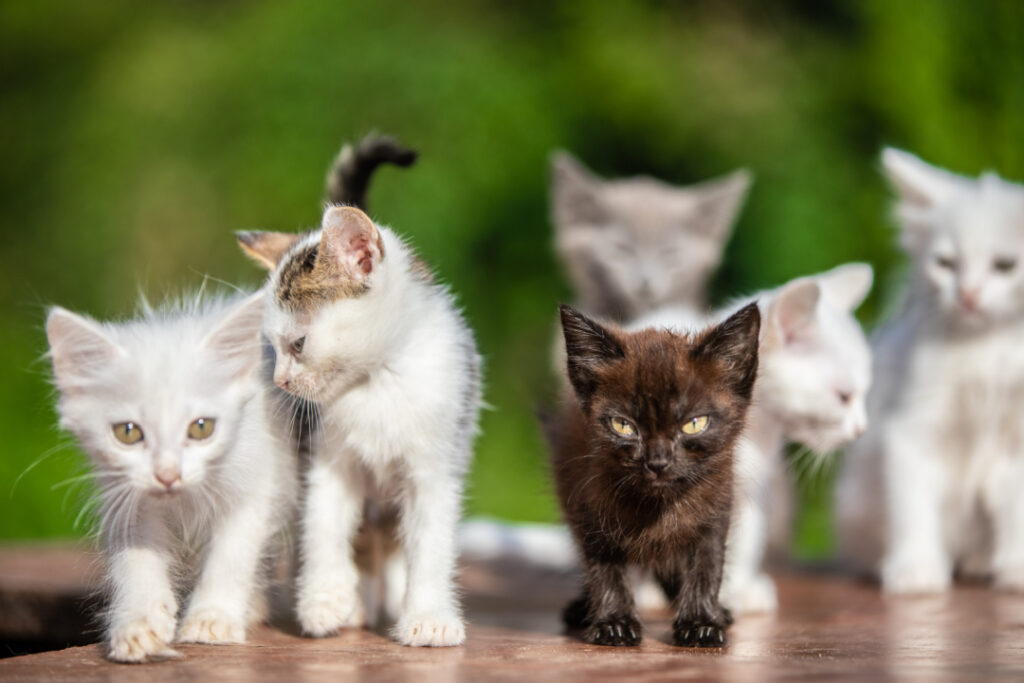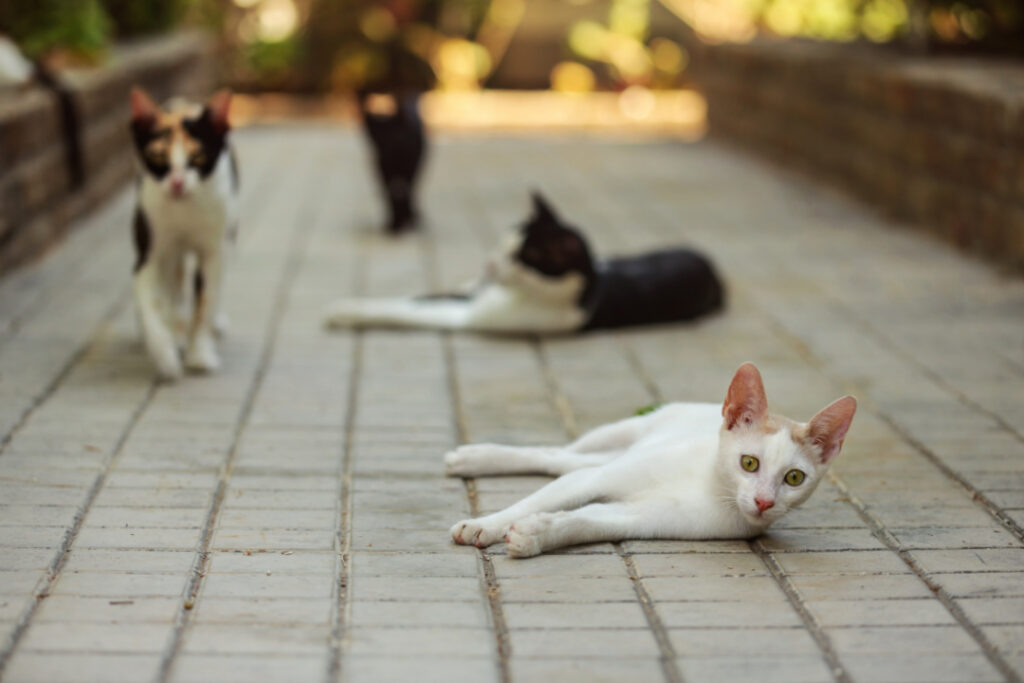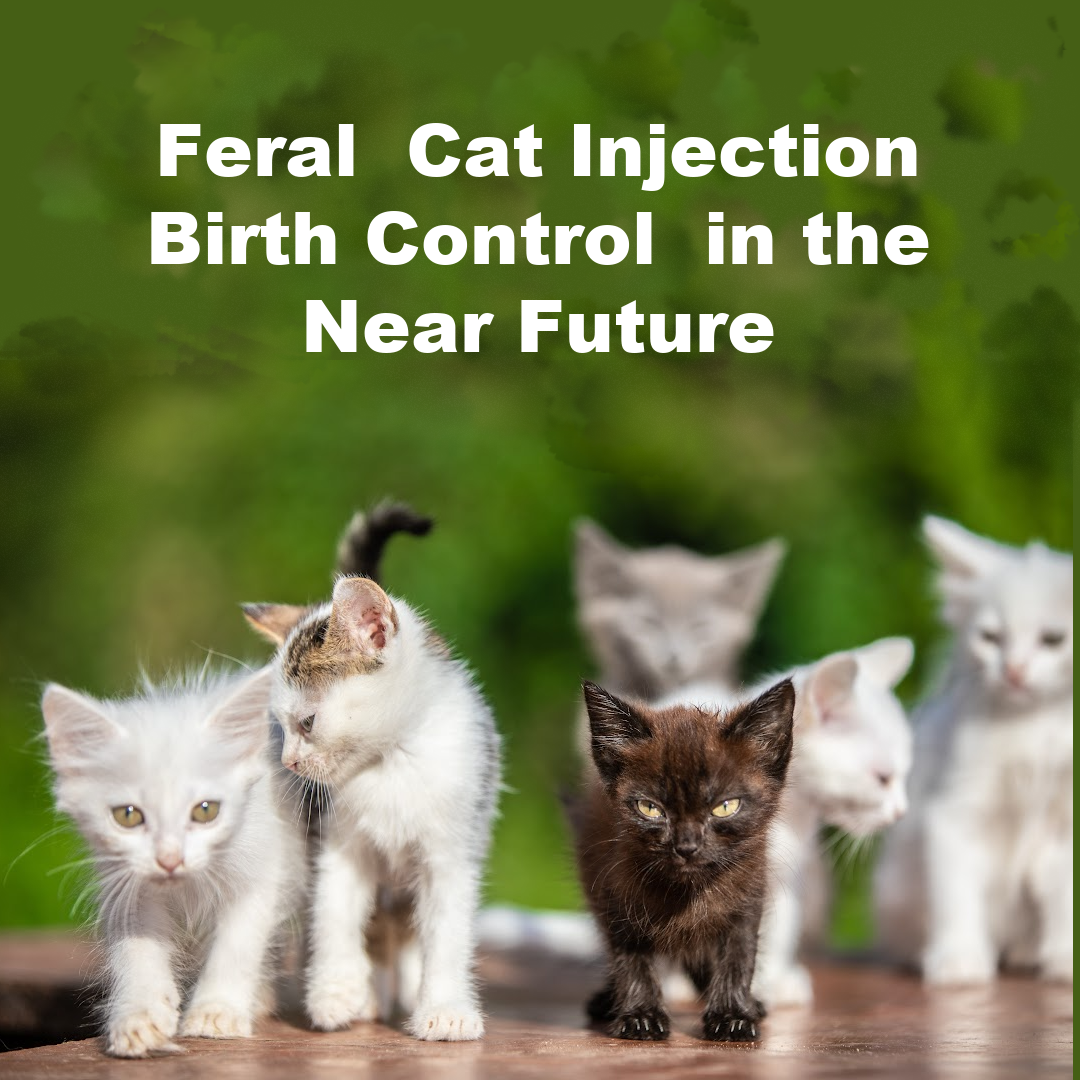
(Photo by ShutterStock)
Earth is up to its whiskers in kitties- feral cats to be more specific. For ailurophiles, that’s Heaven; for the rest of the world—not so much. There’s an estimated 600 million domestic cats in the world.[1] Eighty percent of them are free-roaming. In the U.S. alone there live between 60-100 million feral cats.[2] Girl kittens can find themselves in the family way as early as four months of age and can push out as many as three families a year. Holy cat, that’s a lot of cats!
Over the years, dedicated cat colony managers have waged a population explosion war, neutering every feline they can catch (literally), but Trap-Neuter-Return is labor-intensive, expensive and hit-and-miss. And not every wily feline can be convinced to go into a trap.

Rescuers need safe, easier, cost-effective and permanent contraception.
The answer may almost be within paw’s reach. In a study published last month in the journal Nature Communications, a single shot of a gene therapy prevented pregnancy in cats for at least two years, maybe much longer with no apparent side effects.
Earlier scientific investigation of Antimüllerian hormone (AMH) in mice for a potential treatment of ovarian cancer made a serendipitous discovery. AMH is produced by follicles in the ovary that produce eggs. When amped up in female mice, AMH causes the ovaries to stop forming follicles. The mice’s ovaries shrunk to newborn size, suggesting AMH might have contraceptive properties.[3]

Hopeful New Research for Feral Cats
In the new study, researchers inserted the cat version of the AMH gene into a harmless virus then injected into six young female domestic cats living in a feral cat colony at the Cincinnati Zoo. The cats’ sex hormones remained normal, except they developed low levels of progesterone—a hormone that is produced after ovulation. The treated cats did not ovulate. And when they were placed in a conjugal visit room with a male for several hours each day for four months, there were no little buns in the oven. Four of the females weren’t in the mood; the other two did the nasty but didn’t conceive. Meanwhile, three females given a viral injection without the AMH gene became pregnant and had a boatload of adorable furballs. The result seems to be safe and durable contraception in the female domestic cat.
It isn’t known if the cat-raception is permanent or not, or how long it will keep Fluffy from getting knocked up. The gene doesn’t become part of the cat’s muscle cell DNA, so it’s possible that over time it will diminish and eventually disappear as muscle cells regenerate. AMH levels in all the treated cats decreased over the course of the study, but that they remained elevated in everyone, including a cat they followed for 5 years.
The Downsides
Now the downsides: AMH doesn’t impair sex steroids or prevent heat cycles. So we still enjoy all those endearing behaviors that accompany a horny girl cat estrus. Also, in order to get the injection, kitties still have to be trapped. I can assure you of two things, cats know how to multiply without a calculator and after being trapped once, it’s hard to fool a feral cat a second time.
Much more research would be needed to confirm these preliminary findings. After all, this is only six cats. And if larger studies confirm that the treatment is safe and effective over a cat’s lifetime, cat populations can be controlled without the expense, effort, transport and trauma of surgery.
Research Cited
[1] Vansandt, L.M., Meinsohn, MC., Godin, P. et al. Durable contraception in the female domestic cat using viral-vectored delivery of a feline anti-Müllerian hormone transgene. Nat Commun 14, 3140 (2023). https://doi.org/10.1038/s41467-023-38721-0. https://www.nature.com/articles/s41467-023-38721-0. Accessed 2023-06-26.
[2] Roebling AD, Johnson D, Blanton JD, Levin M, Slate D, Fenwick G, Rupprecht CE. Rabies prevention and management of cats in the context of trap-neuter-vaccinate-release programmes. Zoonoses Public Health. 2014 Jun;61(4):290-6. doi: 10.1111/zph.12070. Epub 2013 Jul 17. PMID: 23859607; PMCID: PMC5120395. https://pubmed.ncbi.nlm.nih.gov/23859607. Accessed 2023-06-26.
[3] Motohiro Kano, Amanda E. Sosulski, LiHua Zhang, David Pépin, et al. “AMH/MIS as a contraceptive that protects the ovarian reserve during chemotherapy.” 114 (9) E1688-E1697. https://doi.org/10.1073/pnas.1620729114. January 30, 2017. Accessed 2023-06-26.










The remaining intact female in the colony I have sort of inherited had kittens. I’ve seen 2, once. She’s a good mother cat, but she’s a good 7-9 years old and really doesn’t need anymore litters. I also want to catch those two kittens to take them out of the question. My 6 year old bottle baby was from the other intact female that hasn’t been seen since the following October, so Opal’s mom might’ve been her last litter. I don’t mind feeding the 2 or so remaining cats, but I don’t want the colony to grow again. I have already taken in one stray who joined the colony. He is not feral, he was wearing a collar and while he was intact then, he isn’t anymore.